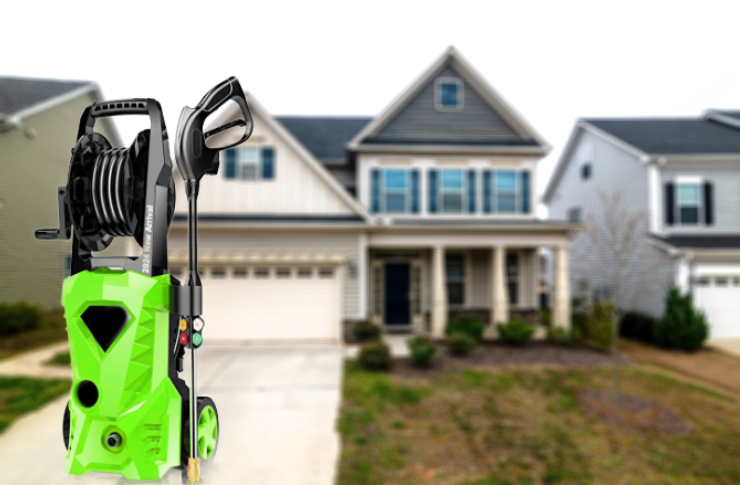The Complete Guide to Outdoor Storage Sheds: Uses, Planning, Materials, and Maintenance
Outdoor storage sheds have become essential fixtures for homeowners seeking to maximize space and organization. These versatile structures offer solutions for everything from garden tool storage to creating dedicated hobby spaces. Whether you're considering your first shed purchase or looking to optimize an existing one, understanding the fundamentals of outdoor storage sheds—their uses, placement considerations, material options, and maintenance requirements—can help you make informed decisions that enhance both the functionality and value of your property.

What Are the Main Uses of Outdoor Storage Sheds?
Outdoor storage sheds serve numerous practical purposes beyond simply storing lawn equipment. Garden enthusiasts often use sheds to house tools, fertilizers, soil, pots, and seasonal plants that need protection from harsh weather. For homeowners with limited garage space, sheds provide valuable overflow storage for seasonal items like holiday decorations, patio furniture, and recreational equipment.
Many homeowners are increasingly repurposing sheds as functional extensions of their living spaces. Workshop sheds equipped with workbenches and power tools create dedicated spaces for DIY projects and hobbies. Others transform their sheds into home offices, art studios, or even small gymnasiums, maximizing their property’s usable square footage without major construction.
For families with children, sheds can serve as organized toy storage for bicycles, sports equipment, and outdoor games. This helps maintain a tidy yard while protecting these items from weather damage. Some larger shed designs even include covered porches or split sections that can accommodate both storage and recreational activities simultaneously.
How Can Homeowners Plan the Placement of a Storage Shed?
Strategic placement of a storage shed requires careful consideration of several factors. First, assess your property’s physical constraints, including existing structures, trees, slopes, and underground utilities. Most municipalities have setback requirements that dictate minimum distances between sheds and property lines, so check local zoning regulations before finalizing your location.
Accessibility should be a priority when determining shed placement. The path to your shed should be convenient and navigable in all seasons, particularly if you’ll access it frequently. Consider proximity to the areas where stored items will be used—placing a garden shed near your garden beds, for example, minimizes transportation of heavy tools and materials.
Environmental factors also influence optimal shed placement. Positioning your shed where it receives partial shade can prevent overheating in summer months, while avoiding low-lying areas susceptible to flooding protects your structure and its contents. For sheds housing sensitive items, consider how sun exposure might affect interior temperatures throughout the day. Finally, think about aesthetic integration—how your shed’s location complements your overall landscape design and maintains visual harmony with your home.
What Materials Are Commonly Used to Build Storage Sheds?
Storage shed construction materials vary widely, each offering different advantages in terms of durability, appearance, and cost. Wood remains a popular traditional choice, appreciated for its natural aesthetic and customization potential. Cedar and redwood varieties naturally resist insects and decay, while pressure-treated pine provides affordability with decent weather resistance. Wood sheds can be painted or stained to match your home and modified relatively easily, though they require regular maintenance to prevent rot and warping.
Metal sheds, typically made from galvanized steel or aluminum, offer exceptional durability and resistance to fire, insects, and rot. These low-maintenance options are generally more affordable than wood but may be prone to rust in humid climates and can heat up significantly in direct sunlight. Modern metal sheds often feature powder-coated finishes that improve both appearance and weather resistance.
Plastic resin has emerged as a popular material for contemporary storage sheds. These structures resist rotting, rusting, and insect damage while requiring minimal maintenance—typically just occasional cleaning. Many resin sheds are designed with reinforced floors to support heavy equipment and double-wall construction for added strength. While they can’t be painted like wood sheds, manufacturers offer various colors and textures that simulate more traditional materials.
Composite materials that blend wood fibers with plastic provide another option that combines the aesthetic appeal of wood with enhanced durability. These environmentally friendly alternatives often use recycled materials and resist splitting, cracking, and rotting better than traditional wood.
What Are the Basic Maintenance Needs for a Storage Shed?
Regular maintenance extends the lifespan of any storage shed regardless of its construction material. For wooden sheds, annual inspection for signs of rot, termite damage, or water infiltration helps identify issues before they become serious problems. Reapplying paint or waterproof sealants every 2-3 years protects the wood from moisture damage and preserves its appearance. Checking and replacing damaged roof shingles prevents leaks that could damage both the structure and stored contents.
Metal shed maintenance focuses primarily on preventing and addressing rust. Inspecting for and treating corrosion spots promptly, particularly around screws and joints, prevents structural weakening. Lubricating door hinges and tracks ensures smooth operation, while checking and tightening loose fasteners maintains the shed’s structural integrity against wind and weather stress.
Plastic and resin sheds require the least maintenance but benefit from regular cleaning to prevent mildew buildup. Using mild soap and water to wash exterior surfaces annually removes dirt and organic matter that could cause discoloration. Checking for cracks or UV damage, particularly in regions with extreme temperature fluctuations, helps identify potential weak points before they worsen.
Regardless of material, all storage sheds benefit from good ventilation to prevent moisture buildup, regular gutter cleaning if applicable, and clearing debris from the roof and surrounding area. Proper drainage away from the foundation prevents water damage and potential structural shifting. Seasonal organization of contents not only maximizes storage efficiency but allows for thorough inspection of interior surfaces for any developing issues.
By understanding the main uses, optimal placement strategies, material options, and maintenance requirements of outdoor storage sheds, homeowners can make informed decisions that maximize their investment and ensure their shed remains functional and attractive for years to come.




